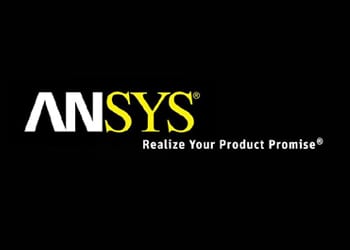Search for your desired courses here
ANSYS Training Course in Dubai
Overview of Ansys Training :
Zabeel offers Ansys training in Dubai, an engineering simulation software used to design products and semiconductors and to create simulations that test a product’s durability, temperature distribution, fluid movements, and electromagnetic properties.
This course trains students on using the Traditional ANSYS Graphical User Interface. Students will learn to perform linear static stress, thermal, and thermal stress analyses. Emphasis is on model definition with the ANSYS preprocessor. Includes an overview of the ANSYS program’s capabilities and features
Ansys course trains students on using the Traditional ANSYS Graphical User Interface. This ansys course is recommended to all (Structural) and Mechanical professional engineers and students (seniors and graduates) interested in learning about finite element modeling using ANSYS.
Ansys is an engineering simulation focused on product design, Structures, system services, high-quality computing, simulation process, and data.
Zabeel offers Ansys courses in Dubai, Sharjah & Abu Dhabi. For more information, Click Call back Request or contact us.
Prerequisites for Ansys Training
B.S. in engineering or engineering experience. Knowledge of finite element theory is recommended. Basic functional familiarity with computers. The ANSYS Workbench environment is an intuitive up-front finite element analysis tool that is used in conjunction with CAD systems and/or Design Modeler. ANSYS Workbench is a software environment for performing structural, thermal, and electromagnetic analyses. The class focuses on attaching existing geometry, setting up the finite element model, solving, and reviewing results. The class will describe how to use the code as well as basic finite element simulation concepts and results interpretation.
Learning Objectives :
- Successful completion of the course will allow students to use Simulation to perform static structural finite element analyses and provide a brief introduction to thermal and modal analyses.
- Students will learn how to use the ANSYS Workbench GUI, how to interface with CAD geometry, how to mesh the geometry, how to apply loads and boundary conditions, how to solve the analysis, and how to post-process the results.
- Students will learn the basics of finite element theory and gain insight on how to create and analyze models that produce accurate results
- The student will be able to create and analyze detailed, real-world finite element static structural models using the ANSYS Workbench software upon class completion.
- The student will gain practical knowledge in performing finite element analysis and understanding the key factors in creating quality meshes, applying loading and boundary conditions that mimic real-world applications, and interpreting results.

Who needs the Ansys Training course?
Anyone who aspires to get a career or improve their knowledge in structural, Thermal and electromagnetic analysis.
Ansys Training Detailed Course Content:
ANSYS program PART-I
Recommended for anyone who performs finite element analysis (FEA) of mechanical parts or fluids and has little or no ANSYS experience, Introduction to ANSYS, Part I focuses on basic linear, static analyses in any discipline. After completing the course, attendees should be able to maneuver efficiently within the ANSYS Graphical User Interface (GUI), build two and three-dimensional models, apply loads and obtain solutions, and effectively verify the results of an analysis and display results.
- FEA & ANSYS
- ANSYS Basics
- General Analysis Procedure
- Creating the Solid Model
- Creating the Finite Element Model
- Defining Material Properties
- Running the Solution
- Structural Analysis
- Thermal Analysis
- Short Topics
- Post-processing- Reviewing Solution Results
- Applying Loads & Boundary Conditions
ANSYS program PART-II
Designed for intermediate ANSYS users who perform FEA on mechanical parts or fluids, Introduction to ANSYS, Part II teaches advanced modeling and analysis techniques – using array parameters, coupling and constraint equations, element coordinate systems and surface effect elements. In addition, beam modeling, sub-modeling, modal and bonded contact analyses are covered along with creating macro files. Upon completion, attendees should be able to apply the advanced modeling & analysis techniques supported by ANSYS.
- Array Parameters
- Coupling & Constraint Equations
- Working with Elements
- Beam Modeling
- Coupled Field Analysis
- Sub modeling
- Modal Analysis
- Bonded Contact
- Introduction to Nonlinear Analysis
- Macro Basics
For More Information on Ansys training Program click here
To know more on other courses in Engineering academy, please visit here







